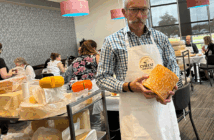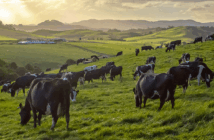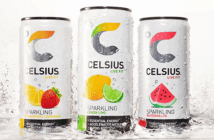 By Tony Hunter, food futurist
By Tony Hunter, food futurist 
Synthetic biology or synbio is often treated with caution. However, similar processes have been around for years, says Tony Hunter.
There’s a saying from Marc Andreessen that “software is eating the world”. Well, that’ll be put in the shade by the rise of synthetic biology (synbio) or the more consumer-friendly term ‘precision fermentation’.
Synbio involves placing DNA for a desired product into a microorganism so it manufactures a product that it normally wouldn’t make. The cell is, if you like, ‘the hardware’ and the inserted DNA sequence is the ‘software’ that we wish to run to produce the output product. These products can be anything from medicines to collagen for non-animal leather, biological fertilisers, growing tulipin for smartphone screens to spider silk for aircraft wings and more. That more includes many food products and ingredients.
Synbio is not new
In case the word ‘Frankenfood’ or similar spring to mind, let’s not forget that two products of synbio have been around for decades. Many of us know someone with Type 1 or Type 2 diabetes. Well, guess where the insulin comes from? It used to come from trainloads of pig pancreases with 1,000 kilograms producing only some 125 grams of insulin. But in 1982 Genentech and Eli Lilly commercialised the production of insulin from genetically engineered E. coli.
Given the rise of lifestyle related Type 2 diabetes, the demand for insulin has grown dramatically with a projected growth of 9.5 % compound per annum to 2025. Where would we be without this synbio solution?
So, people have been injecting the product of a genetically engineered organism into their bodies for 38 years. It’s amazing that people think nothing of injecting the product of a genetically engineered organism into their bodies for their health but might balk at eating a synbio product. Well, we actually do eat a synbio derived product – it’s called cheese.
Rennet is used to coagulate milk proteins to make cheese and it originally came from the fourth stomach of a few days’ old calf. With the increasing cheese consumption and the decline in veal production in the ’70s the cheese industry was in a bit of a bind with rennet supply. Various fungi and plant enzymes can be used, but the flavour isn’t as good. The primary milk coagulating part of rennet is an enzyme called chymosin and insulin production had shown that genetic engineering was a viable process. As a result, in 1990 the FDA approved Pfizer’s GMO E. coli derived chymosin for human consumption. So, for 30 years billions of people have been consuming the product of genetically modified organisms.
But what does this technology mean for food?
The above are two early examples of synbio, but here we’ll stick to food. There are some amazing technologies coming to market and a couple of more well-known food companies are:
- Perfect Day Foods – Whey protein from yeast – US$362 million (incl Series C) backed by US$62 billion ingredients company ADM – They’ve released a limited run of ice cream and have already met their 2022 price targets.
- Clara Foods – Egg white proteins from yeast – US$57 million (incl Series B), backed by US$6 billion ingredients company Ingredion. Products are due in late 2020/early 2021.
- Motif Foodworks – Functional ingredients for improving plant-based foods – US$118 million (incl Series A). With a significant war chest and as a spinoff of Ginkgo Bioworks, they’ll release their first products in 2021.
- Geltor – Collagen/gelatin – US$114 million (incl Series B). Their investors include one of the world’s largest conventional gelatin manufacturers, Gelita.
Some examples of earlier stage companies include:
| Company | Products | Stage |
| Bond Pet Foods | Microbially produced animal proteins for pet food | US$1.2 million seed |
| Cultivated | Dairy alternatives | Startup |
| Harmony | Human milk proteins for infant formula | Startup |
| Legendairy Ltd | Dairy proteins | US$4.4 million seed |
| Nourish ingredients | Fats for alternative meat products | Startup |
| Triton Algae Innovations | Heme and other meat ingredients | US$5 million seed |
Significantly, many of the companies above, and many others, are adopting a B2B strategy. This leverages the technologies and products since they’re available to multiple downstream users, not solely the inventing company. This adds a multiplying effect of synbio technologies in the coming decades.
The future
Looking at the list above, and considering other entrants, dairy alternatives and alternative protein improvers are major focusses. Many of these companies have the capacity to be game changers to these and other conventional industries. And if you think that this is long term science fiction, think again. Remember that insulin and chymosin synbio products now dominate those markets and have for decades. Perfect Day was only established in 2014 and Geltor in 2015. Food is now technology and technology advances exponentially, so imagine what things could look like in 2030 or 2040.
So, highly appropriately for the food industry, synbio will indeed “eat the world”.
Tony Hunter is a global futurist, food scientist, speaker and foresight strategy consultant. He consults and speaks globally, using his distinctive combination of scientific qualifications, business experience and detailed understanding of exponential food technologies to deliver a unique perspective on the future of food.


























































































 By Tony Hunter, food futurist
By Tony Hunter, food futurist 


